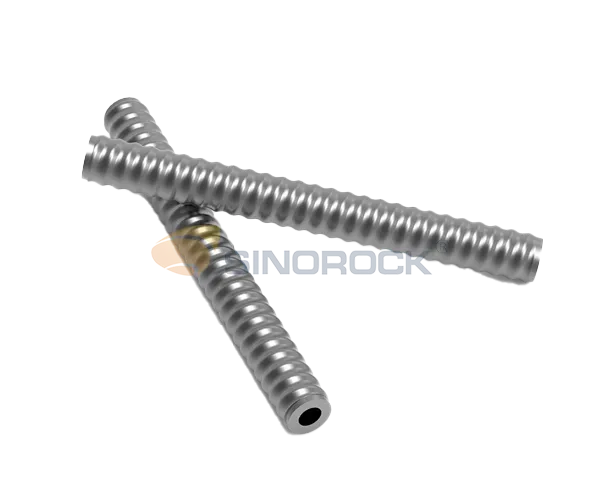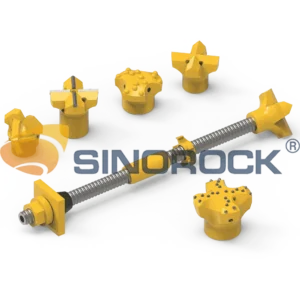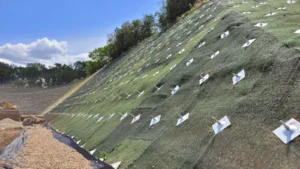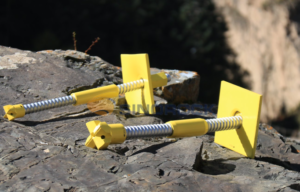As the global economy continues to evolve, civil construction plays an increasingly critical role in shaping our cities and infrastructure. The need for high-quality, durable, and safe buildings has never been more pressing. Ensuring the stability and safety of foundations is paramount in both the construction of new structures and the reinforcement of existing ones. One of the most innovative solutions in modern construction is the self-drilling anchor bolt (SDA bolt), a method that has revolutionized foundation stabilization and slope reinforcement.
In this article, we will explore what self-drilling anchor bolts are, their applications, design considerations, and how they contribute to ensuring the stability of structures in challenging geological conditions. The aim is to provide a deeper understanding of the current industry trends and best practices related to SDA bolts, particularly in geotechnical and civil engineering applications.
What is a Self-Drilling Anchor Bolt (SDA Bolt)?
A self-drilling anchor bolt (SDA bolt) is a type of anchor used to stabilize structures by creating a secure bond between the ground and the construction element. What makes SDA bolts unique is that they combine the processes of drilling, grouting, and anchoring into one seamless operation. This is achieved through a specially designed bolt that has a drill bit at its end, enabling the anchor to drill into the soil or rock while simultaneously injecting grout and securing the anchor in place.

Unlike traditional anchor systems, which require separate drilling and anchoring steps, the SDA bolt streamlines the process, making it more efficient and cost-effective. A single skilled worker can perform all the necessary operations with minimal equipment. This simplicity reduces labor costs and construction time, making it an attractive choice for many projects.
Applications of Self-Drilling Anchor Bolts
SDA bolts are widely used in a variety of applications, particularly in geotechnical and civil engineering projects where ground conditions are less than ideal. These applications include:
- Foundation Stabilization: SDA bolts are commonly employed in foundation reinforcement projects, particularly in weak or unstable soil conditions. In areas with poor soil texture, self-drilling anchor bolts provide a reliable and cost-effective way to enhance foundation strength and stability.
- Slope Stabilization and Landslide Control: In regions prone to landslides or rockfalls, SDA bolts are used to stabilize slopes and prevent the collapse of soil or rock masses. By anchoring unstable material to more stable ground, these bolts prevent movement and reduce the risk of landslides.
- Tunneling and Underground Construction: During tunnel construction, especially in regions with weak or fractured rock, SDA bolts are used to stabilize tunnel walls and prevent collapses. The ability to drill and anchor simultaneously reduces construction time and increases safety.
- Reinforcement in High-Stress Zones: In areas where ground stress is high and significant deformation is expected, such as fault zones or seismic areas, SDA bolts offer an effective method for stabilizing the ground and supporting structures.
- Mining Applications: In mining operations, where ground stability is often a concern, SDA bolts are widely used to support tunnels, mine shafts, and other underground structures. Their ability to anchor effectively in weak rock formations makes them an essential tool in the mining industry.
Advantages of Self-Drilling Anchor Bolts
The use of self-drilling anchor bolts offers several advantages over traditional methods of foundation and slope stabilization. These benefits include:
1. Efficiency and Speed
The integrated drilling, grouting, and anchoring process significantly reduces construction time. Since all three operations are performed simultaneously by a single worker, the need for multiple machines and labor is minimized. This streamlining results in faster project completion times, which is particularly valuable for projects with tight deadlines.
2. Versatility in Geotechnical Conditions
SDA bolts are particularly effective in weak or fractured geological conditions, including fault zones, high-stress areas, and regions with significant ground deformation. Whether the substrate is soft soil or hard rock, SDA bolts can provide reliable anchorage. Their ability to be installed quickly makes them ideal for emergency situations, such as structural repairs after a collapse or in landslide-prone areas.
3. Cost-Effectiveness
By reducing the need for multiple steps in the anchoring process and minimizing labor and machinery requirements, self-drilling anchor bolts offer a more cost-effective solution than traditional methods. Their efficient installation also reduces the overall project timeline, contributing to lower overall project costs.
4. Enhanced Structural Stability
Once installed, SDA bolts create a strong and secure connection between the soil or rock and the structure. This ensures that buildings and infrastructure are supported even in challenging ground conditions, enhancing their stability and safety over time. The long-term reliability of SDA bolts makes them an essential component in many modern construction projects.
Design Considerations for Self-Drilling Anchor Bolts
While the benefits of SDA bolts are clear, successful implementation requires careful planning and design. Several factors must be considered when designing a system that utilizes self-drilling anchor bolts. These considerations help ensure the safety, efficiency, and cost-effectiveness of the project.
1. Geological and Hydrological Conditions
Before installing SDA bolts, it is crucial to assess the geological and hydrological conditions of the construction site. The soil type, rock formations, water table levels, and potential for groundwater flow must all be taken into account. A thorough geotechnical investigation ensures that the selected anchoring method will provide the necessary support and stability.
2. Surrounding Structures
The safety of nearby structures, such as underground pipes, buildings, and public utilities, must also be considered. SDA bolts need to be installed in such a way that they do not interfere with or damage existing infrastructure. Detailed site planning and accurate measurements help avoid these issues.
3. Stability of Supporting Structures
The overall stability of the supporting structures must be assessed before designing the SDA bolt system. This includes considering the ground subsidence value, the potential impact on adjacent structures, and the expected deformation of the soil or rock. The goal is to ensure that the SDA bolt system will not only stabilize the foundation but also contribute to the long-term integrity of the entire construction project.
4. Safety and Cost-Efficiency
The design of the SDA bolt system must strike a balance between safety and cost-efficiency. The supporting structure should be robust enough to withstand expected forces while also being economical to install. This is particularly important for large-scale projects, where material and labor costs can significantly impact the overall budget.
5. Collaboration Between Engineers
Effective collaboration between geotechnical engineers and structural engineers is crucial for a successful SDA bolt design. The two teams must work together to ensure that the design aligns with both the geological conditions and the structural requirements of the project. This ensures a cohesive and effective solution for foundation stabilization and structural support.
Conclusion
In conclusion, self-drilling anchor bolts (SDA bolts) represent a critical innovation in geotechnical engineering, offering significant advantages in terms of speed, cost-efficiency, and effectiveness. These bolts provide a reliable solution for stabilizing foundations, controlling slopes, and ensuring the integrity of structures in challenging geological conditions. By understanding the design considerations and applications of SDA bolts, engineers and contractors can better implement these systems to ensure the success of their projects. Whether used in tunneling, foundation reinforcement, or slope stabilization, SDA bolts continue to be an essential tool in modern construction, making them a valuable asset for the future of civil engineering.





